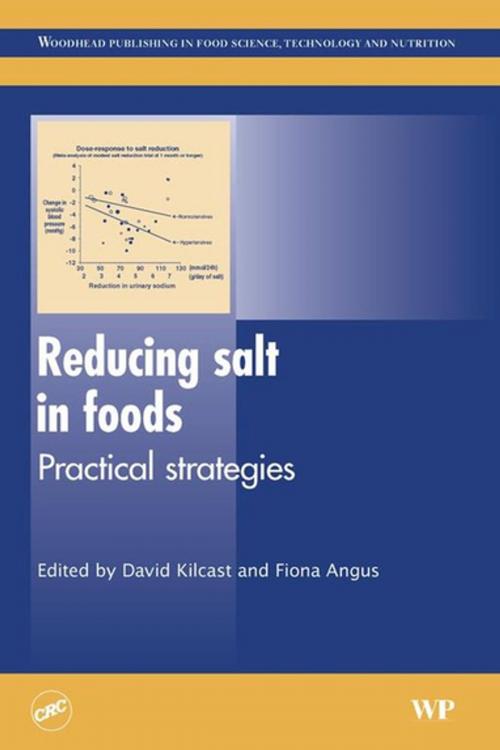Reducing Salt in Foods
Practical Strategies
Nonfiction, Science & Nature, Technology, Food Industry & Science| Author: | ISBN: | 9781845693046 | |
| Publisher: | Elsevier Science | Publication: | February 14, 2007 |
| Imprint: | Woodhead Publishing | Language: | English |
| Author: | |
| ISBN: | 9781845693046 |
| Publisher: | Elsevier Science |
| Publication: | February 14, 2007 |
| Imprint: | Woodhead Publishing |
| Language: | English |
Concerns have grown that consumption levels of salt are well above those needed for nutritional purposes and that this can lead to adverse effects on health, in particular cardiovascular disease. Consumers are increasingly looking to reduce their salt intake, making salt reduction a priority for food manufacturers. This is not straightforward, though, as salt plays an important role in food preservation, taste and processability. Written by a team of international experts, Reducing salt in foods provides a unique review of current knowledge in this field.
This book is divided into three parts and discusses the major issues concerned with salt reduction and how it may be achieved. Part one reviews the key health issues driving efforts to reduce salt, government action regarding salt reduction and the implications of salt labelling. Consumer perception of salt and views on salt reduction and are also discussed. The second part focuses on the technological, microbiological and sensory functions of salt and strategies that can be taken to reduce salt. The final part of the book outlines strategies which have been taken to reduce salt in particular food groups: meat and poultry, seafood, bread, snack foods, dairy products and canned foods.
Reducing salt in foods is an essential reference for health professionals, governments and food manufacturers.
- Discusses methods to reduce salt while maintaining food sensory quality, shelf-life and processability
- Provides a unique review of current knowledge in this field
- An essential reference for health professionals, governments and food manufacturers
Concerns have grown that consumption levels of salt are well above those needed for nutritional purposes and that this can lead to adverse effects on health, in particular cardiovascular disease. Consumers are increasingly looking to reduce their salt intake, making salt reduction a priority for food manufacturers. This is not straightforward, though, as salt plays an important role in food preservation, taste and processability. Written by a team of international experts, Reducing salt in foods provides a unique review of current knowledge in this field.
This book is divided into three parts and discusses the major issues concerned with salt reduction and how it may be achieved. Part one reviews the key health issues driving efforts to reduce salt, government action regarding salt reduction and the implications of salt labelling. Consumer perception of salt and views on salt reduction and are also discussed. The second part focuses on the technological, microbiological and sensory functions of salt and strategies that can be taken to reduce salt. The final part of the book outlines strategies which have been taken to reduce salt in particular food groups: meat and poultry, seafood, bread, snack foods, dairy products and canned foods.
Reducing salt in foods is an essential reference for health professionals, governments and food manufacturers.
- Discusses methods to reduce salt while maintaining food sensory quality, shelf-life and processability
- Provides a unique review of current knowledge in this field
- An essential reference for health professionals, governments and food manufacturers















